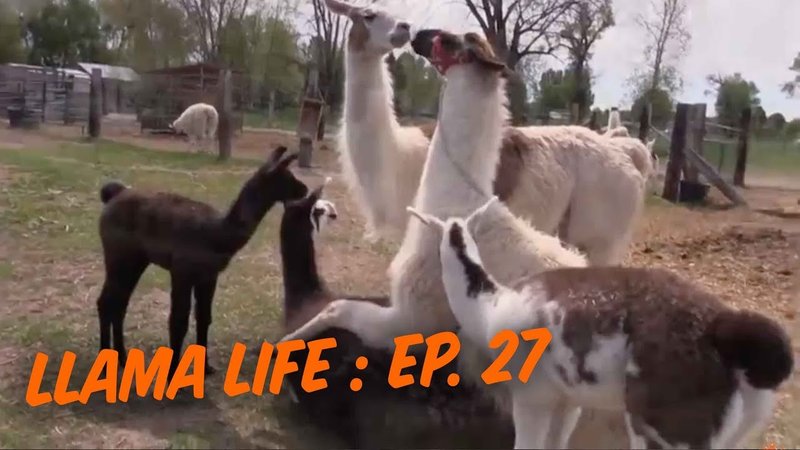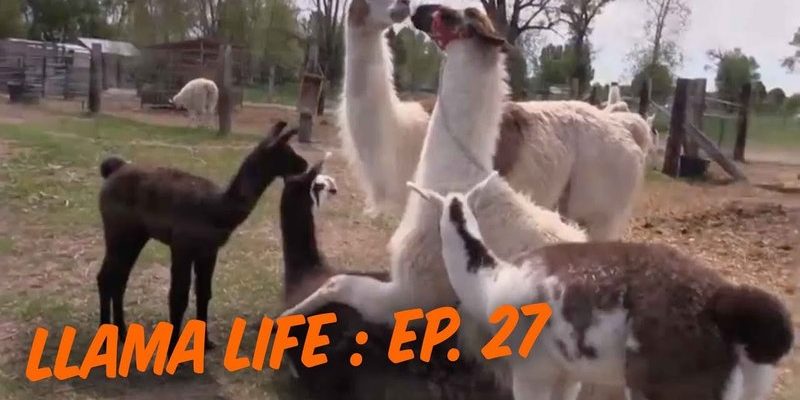
Llamas are fascinating creatures—known for their gentle nature and unique personalities. Breeding them successfully, however, requires more than just good intentions. You’ll need to understand their reproductive cycle, how to ensure healthy matings, and what to do once a baby llama, or cria, joins the family. Let’s break down this journey step by step, so you can feel prepared and excited for the adventure ahead.
Understanding Llama Mating Behavior
Mating is a natural part of a llama’s life, but it’s essential to understand their behavior during this phase. Llamas are polygamous, meaning that one male can mate with multiple females. When a female, or dam, is in heat, she’ll often show signs like humming, pacing, and even slightly crouching to signal she’s ready to mate.
You might be wondering how to recognize the right time for breeding. Typically, a llama’s estrous cycle lasts around 7 to 10 days, and females are usually receptive to mating for about 24 to 36 hours. It’s crucial to note this timing closely. If you’re trying to breed a llama for the first time, having a knowledgeable handler or vet can be super helpful in identifying these signs.
Once the female is ready, the male, known as a sire, will begin a courtship that can involve a little drama—think of it as flirting. He may chase her, hum, and try to gain her affection. If she accepts, the actual mating process is quite quick, lasting only about 20 minutes. After a successful mating, patience is key—you won’t see instant results!
The Gestation Period: What to Expect
After a successful mating, the next crucial phase is the gestation period, which lasts about 11.5 months, or roughly 350 days. That’s almost a year, so it’s a serious commitment! During this time, you’ll want to provide extra care for your pregnant llama.
Nutrition during gestation is incredibly important. A well-balanced diet with plenty of hay, grains, and fresh water will help ensure the dam stays healthy. You might want to monitor her weight, as underweight or overweight llamas can have complications during birthing. As her belly grows, you may find her becoming a little more cranky or moody—this is perfectly normal! Think of it like a pregnant person wanting to eat pickles at 3 AM.
Also, keep an eye out for any unusual signs of distress. If she’s off her feed or unusually lethargic, a trip to the vet might be in order. Regular check-ups will give you peace of mind as you prepare for the new arrival.
Preparing for the Arrival of the Cria
As the due date approaches, preparation becomes key. Create a safe and comfortable environment for the dam to give birth. A clean, dry area with plenty of soft bedding is crucial. Avoid any stressful situations around her, as llamas prefer calm environments. Think of it like setting up a cozy nursery before a baby’s arrival.
It’s also a good time to gather supplies for the cria. You’ll need items like a clean towel (for drying the newborn), a heat lamp (if you’re in a colder climate), and a good thermometer to ensure everything is running smoothly. Just like expecting parents, you want to be ready for that special day!
In the last few weeks of pregnancy, you might notice your llama getting more restless. This is a natural sign that she’s preparing to give birth. Keep her isolated from the rest of the herd if possible, so she can focus on labor without distractions.
Understanding the Birthing Process
When the big day arrives, it can be both thrilling and nerve-wracking. Llamas typically give birth standing up, which is different from many other animals. As labor begins, you might see her pacing, making soft noises, or even nesting. It’s like she’s putting on a little show to prepare for the main event!
Labor often lasts between 30 minutes to an hour. You’ll want to keep an eye on her, but avoid intruding too much. It’s essential to let her labor naturally, as too much interference can cause stress. You’ll probably see the cria being born in a sac, which the dam will instinctively break open with her teeth. It’s a beautiful, natural process—like nature’s own miracle unfolding right in front of you.
Once the cria is born, it’s vital to make sure it stands and starts nursing within the first hour. Colostrum, the first milk, is packed with antibodies that are crucial for the cria’s immune system. If the cria struggles to stand, gently assist it. Just like a human newborn, it might take a few tries before it gets the hang of it.
Caring for the Cria: The First Few Weeks
Caring for a newborn cria is like having a new puppy—super cute but requiring a lot of attention! The initial weeks are crucial for its growth and health. Make sure the cria has constant access to both the dam and fresh water. *Nutrition is key* at this stage, so ensure the dam is well-fed, which will benefit the cria too.
Monitor the cria closely. It should be up and moving around within a couple of hours after birth. If it seems lethargic or isn’t nursing properly, call your vet for advice. Cria should also start eating solid food by about 4-6 weeks, so consider introducing high-quality hay and minerals to their diet.
Socialization is also important. If you have other llamas, allow the cria to interact as it grows, but make sure all introductions are supervised. Think of it as giving the cria a chance to make friends and learn how to be a part of the herd.
As the weeks go by, enjoy watching the cria’s personality unfold! Each cria is unique, and their playful antics can bring a lot of joy to your space.
Common Breeding Challenges and Solutions
While breeding llamas can be a delightful experience, it’s not without its challenges. One common concern is infertility. If your llama isn’t getting pregnant after several attempts, it’s time to consult with a vet to assess the health of both the dam and the sire. Factors like age, health issues, or improper timing can all come into play.
Another issue can be complicated births, also known as dystocia. If you notice excessive straining or distress during labor without progress, it’s critical to call for professional help. An experienced vet can assist with difficult births safely.
Lastly, be prepared for behavioral issues. Sometimes, llamas can be territorial, particularly during the mating and birthing process. It’s essential to monitor their interactions closely and intervene when necessary to prevent aggression.
Llama breeding is a fascinating and rewarding journey filled with natural beauty and joy. From understanding mating behaviors to ensuring a safe arrival for the cria, each step is an opportunity for learning and growth. While there might be bumps along the way, with preparation and care, you’ll find yourself part of a nurturing community of llamas and their little ones.
So, whether you’re thinking about starting your llama breeding adventure or you’re already deep into it, remember to enjoy the process. Each cria brings a unique personality and charm to your life, making every sigh and struggle worth it. Embrace the ups and downs, and soon you’ll be sharing your own stories of these incredible creatures. Happy breeding!

